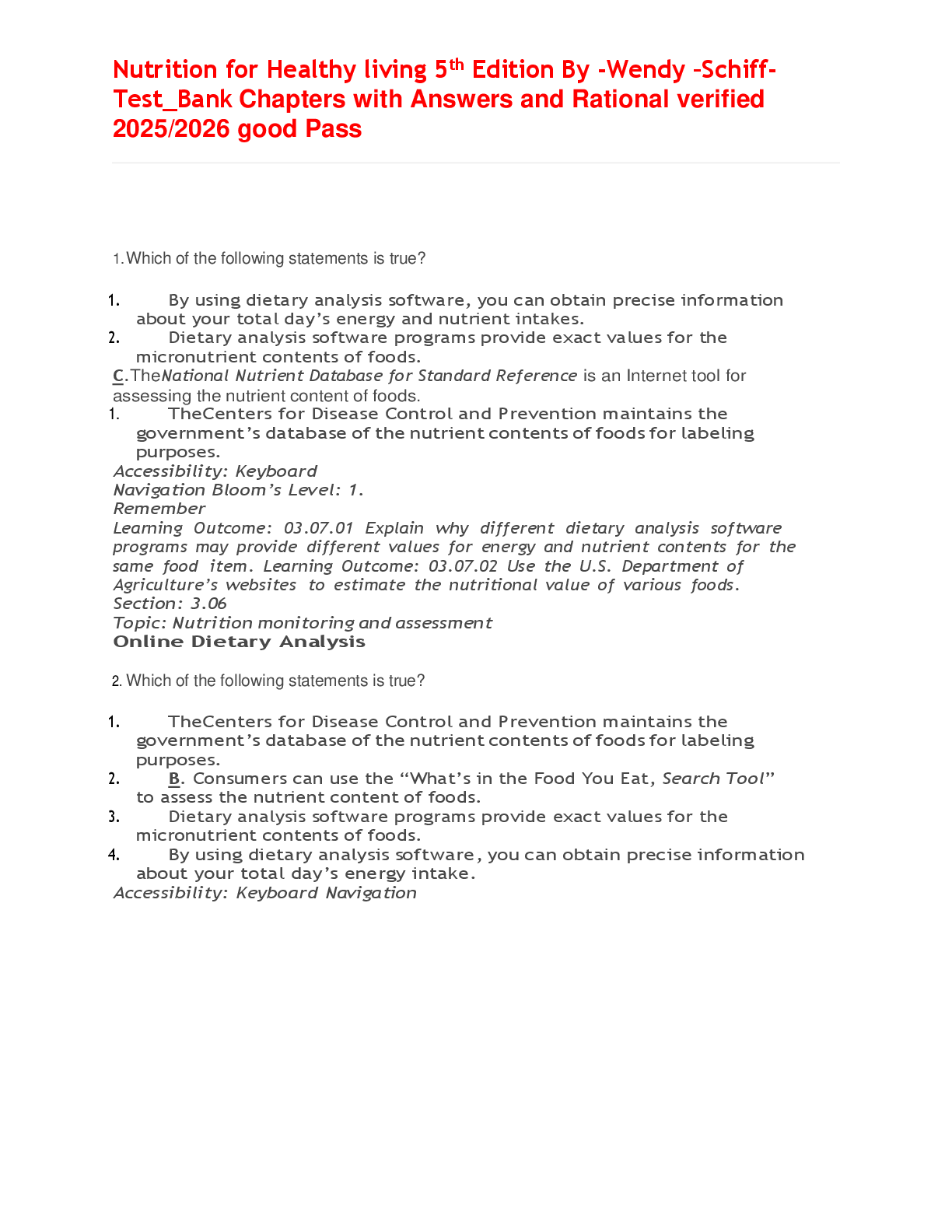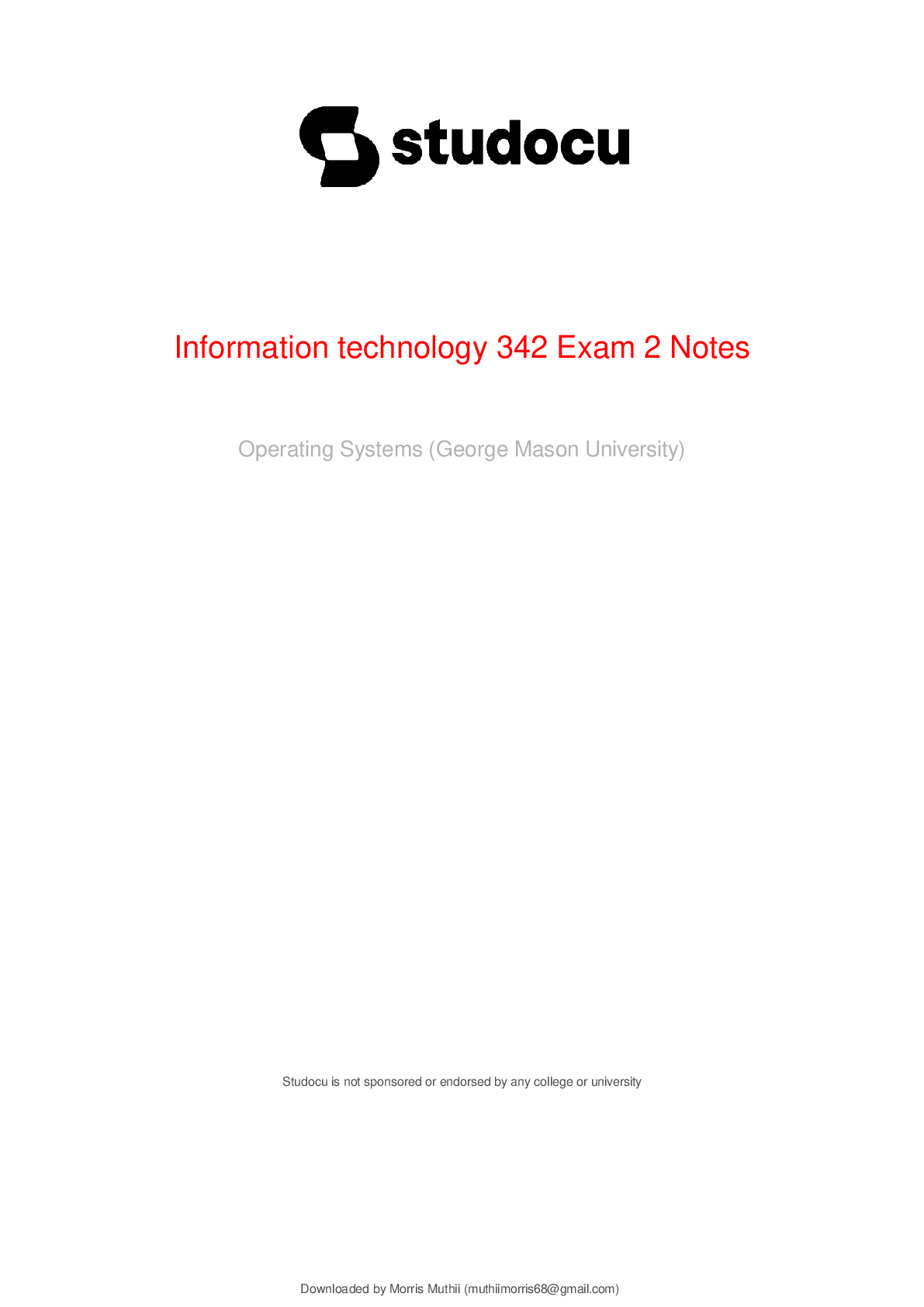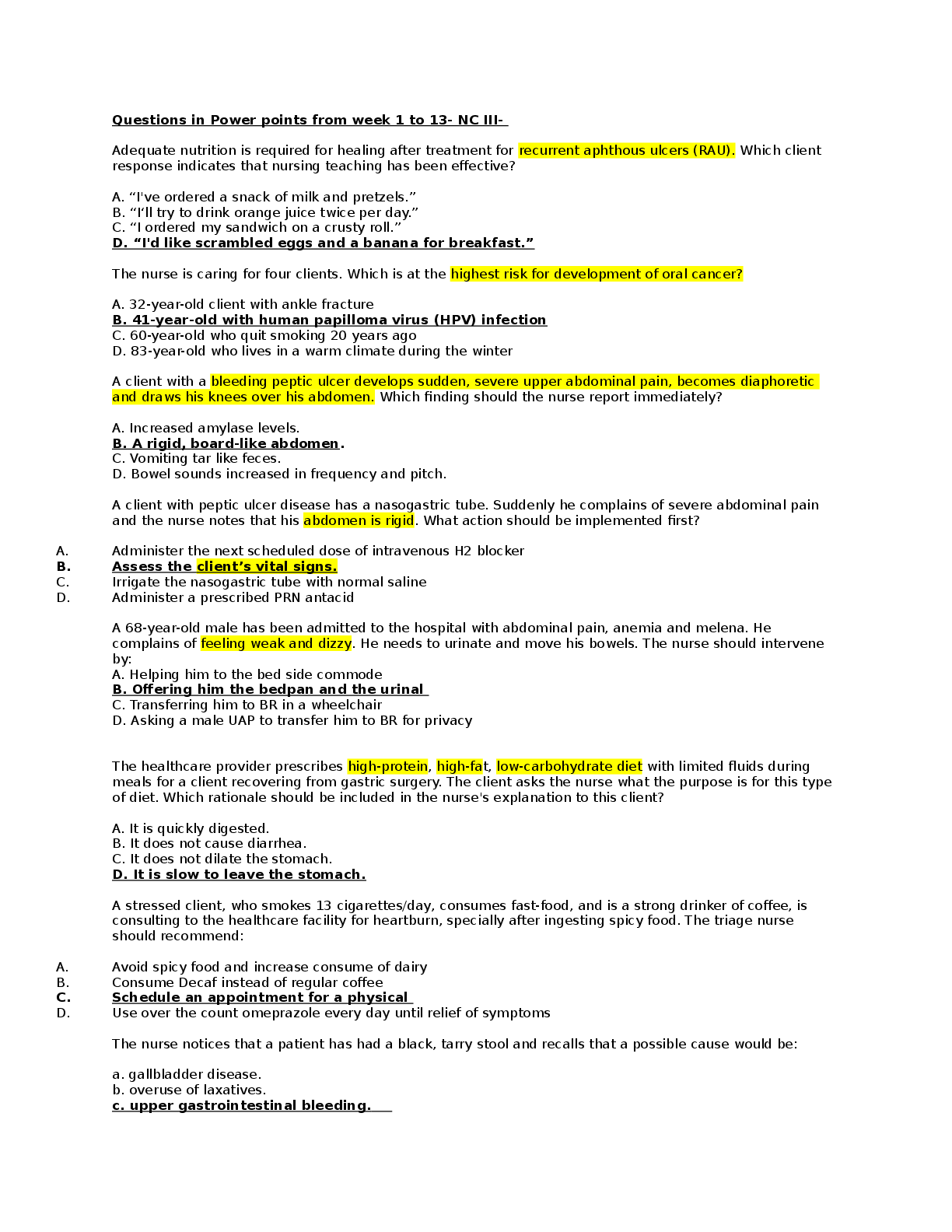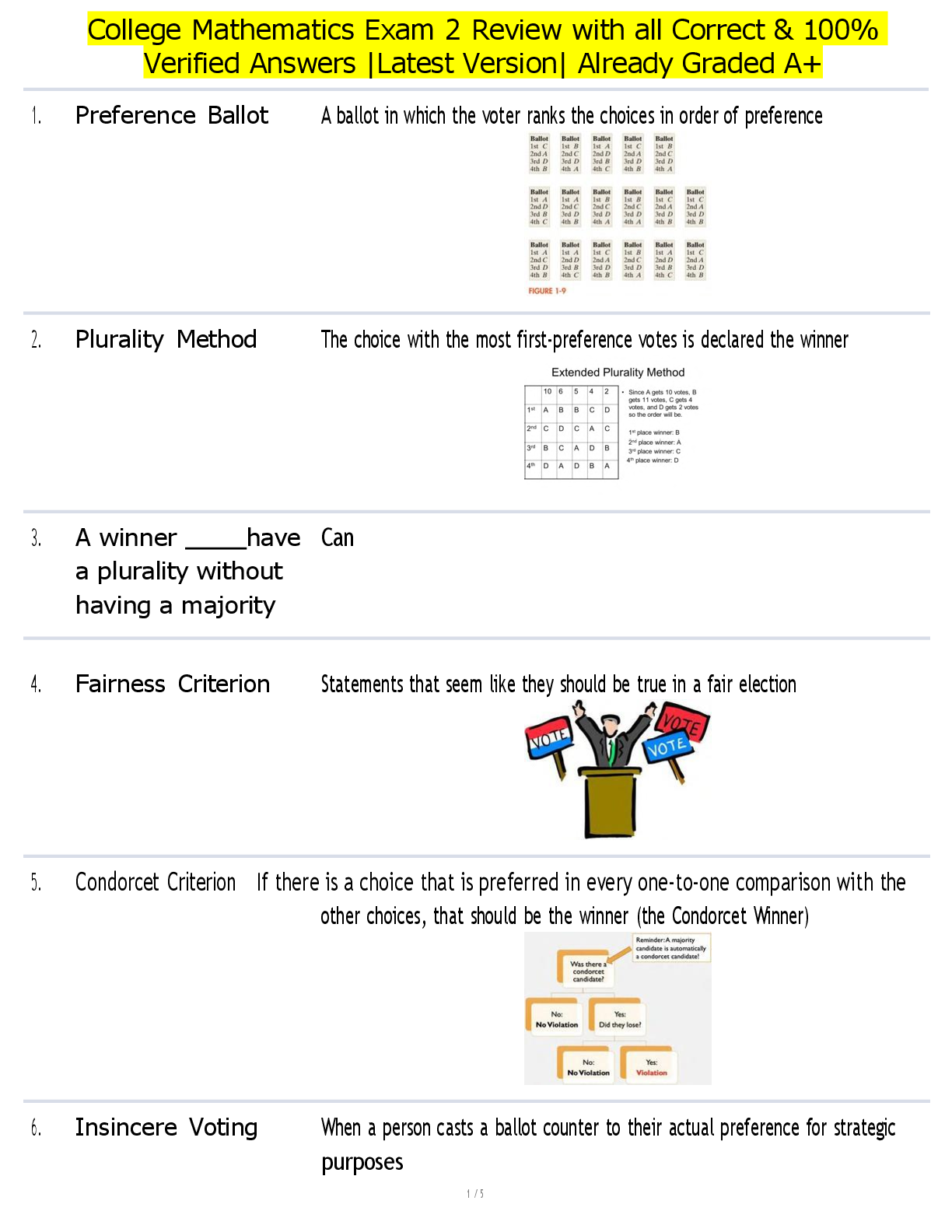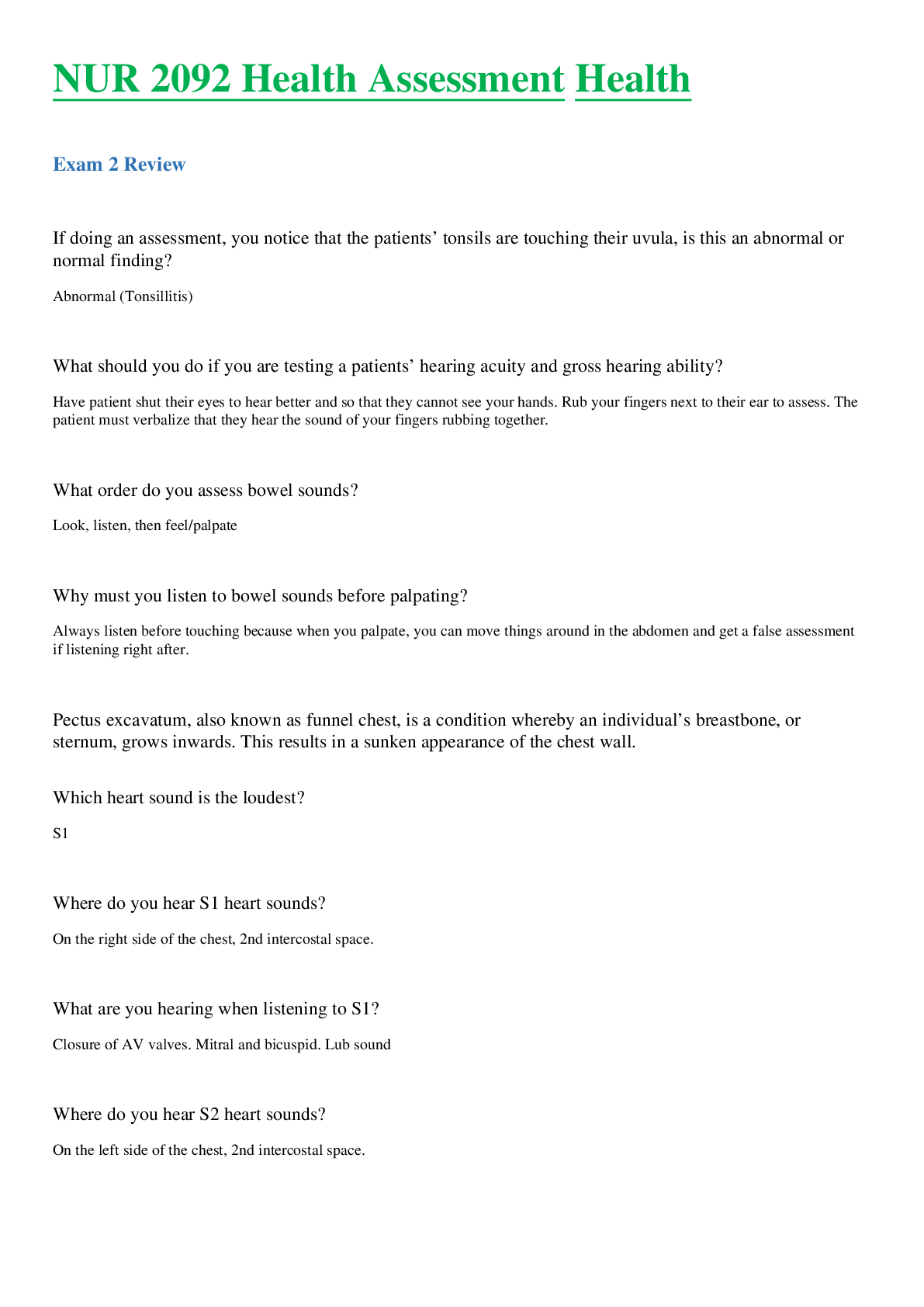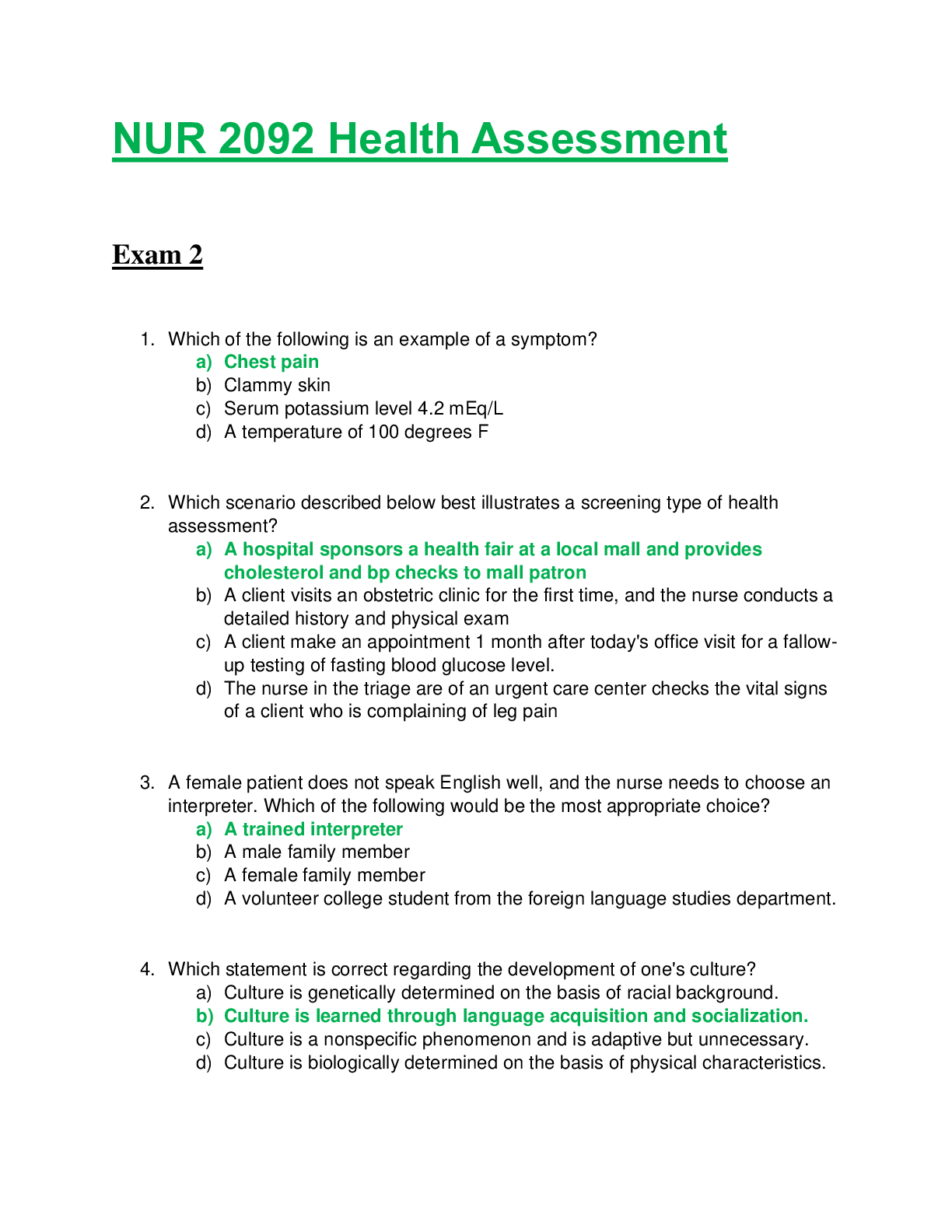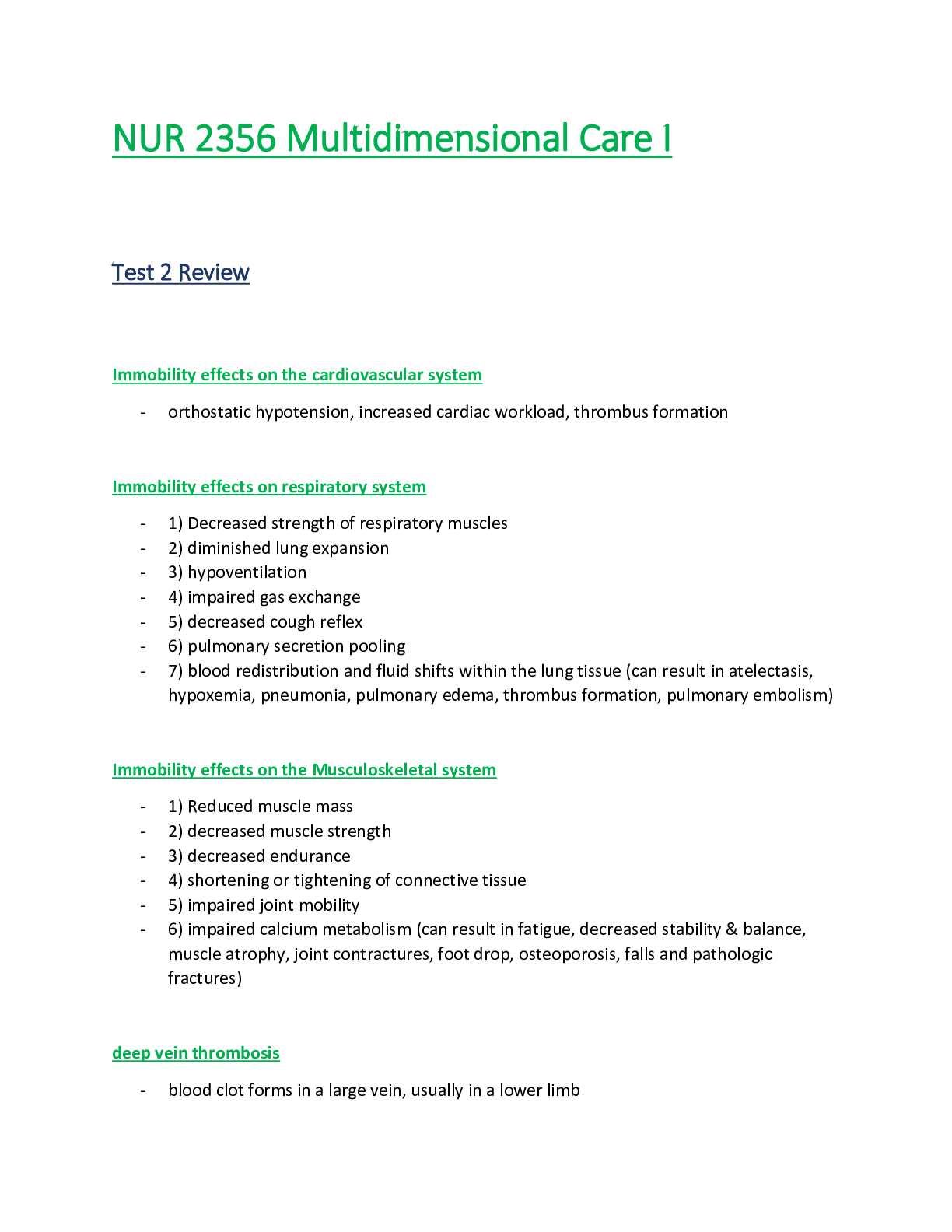Information Technology > EXAM REVIEW > Information technology 342 Exam 2 Notes Already Verified 2025 (All)
Information technology 342 Exam 2 Notes Already Verified 2025
Document Content and Description Below
Lecture 5 (Input Output Devices Manager) Reason for Input/ Output (I/O) - Normally the primary purpose of a computer o Most applications don’t do much processing. ▪ Presentation program (l ... ike PowerPoint) ▪ Word Processing program (like Word) Peripheral View - For long time considered outside the operating system. - But many problems of a computer were due to them o Conflicting interrupts, Drivers, Memory allocation, Updated drivers Input and Output - Input - Output - Issues - - - - - - - - I/O - Physical device, Connections, Support equipment, Software Changes the nature of programs o Keyboard, Storage Devices Allows end users to see the data o Monitors/ displays, Storage devices Large number of devices o Each type of devices have many options; Manufacturer, Cabling, Configurations o Most complex part of the computer o OS must manage the differences. Peripherals are physical o Interact with the real world o Must fit with the computer system o USB: type A, B, C, 3, mini, Micro. Data Rates vary over 8 orders of magnitude Task Control: Blocking/ non-blocking Data transfers: Block/ character / clock Transfer Schedule: Synchronous/ Asynchronous Data transfer: Serial (farther Parallel) Control Complexity o Handled by device hardware o Data Access: Sequential/ Random/ Direct o Shareability: Dedicated / Shareable / Virtual o I/0 direction: Write/ read/ both o Function o Error Conditions: unique to each device Objectives o Efficiency ▪ I/O operations are usually the bottleneck. Downloaded by Morris Muthii ([email protected]) ▪ I/O devices are slow compared to CPU. o Improved abstractions ▪ Handle all devices uniformly. - - - OS Role o Manage and Control ▪ I/O Operations, I/O Devices o Mange ▪ Keep track of what’s available ▪ Keep track of who owns and can use o Control ▪ Have System calls to do things History o Directly controlled by applications, Controllers provided, o Control of memory bus o Specialized instruction sets o Dedicated microprocessors Categories o Human Readable ▪ Printers, terminals, video displays, mouse o Machine Readable ▪ Communication with equipment and remote devices ▪ Disk drives, USB keys, sensors Interconnections - Set of wires - - - Strict protocol Direct connection to CPU is referred to as back side bus Examples: PCI bus, IDE Disk Controller, SCSI, Expansion Daisy Chain - Peripheral connected to each other; Disk Drivers, USB. Support Structures - Registers o CPU; I/O Address, I/O Buffer o Device Controller; Command, Buffer - Memory o Unique identifier o Current Owner o Location of Device Driver o Location of Control Register o Location status Register o Error Vector locations o Channel or port o Status Communication with I/O Downloaded by Morris Muthii ([email protected]) - - Direct through bus Memory Mapped System Calls - I/O is hardware o It is all protected o Kernel involvement - Application program uses API o User OS uses System call to get to kernel o API may only be a wrapper Communication - Two parts o Control ▪ Command from CPU to device ▪ Status from device to CPU o Transfer of data Methods of I/O Control - - Memory Mapped o CPU and device must periodically check memory Command o CPU sends command directly to device; could be the DMA o Device sends interrupt to get attention; CPU retrieves status o CPU checks device periodically Methods of I/O data transfer - - - Polling o Aka Busy Waiting or programmed I/O o CPU continually (periodically) checks device Interrupts o Peripheral sends a signal when it needs to be serviced Direct Memory Access (DMA) o Controller that can directly access Memory Interrupt Issues - - - May have priorities Must identify proper subroutine(handler); through interrupt vector Can be blocked for critical sections of code Handling Interrupt Issues - Multiple IRQ (Interrupt Request Lines) - - - Post address to access proper Interrupt Vector For large numbers of devices use chaining Include priority levels Buffering - Accounts for differences of speed between two devices - - Breaks transfer into smaller pieces Support copy semantics. [Show More]
Last updated: 9 months ago
Preview 3 out of 7 pages

Loading document previews ...
Buy this document to get the full access instantly
Instant Download Access after purchase
Buy NowInstant download
We Accept:

Also available in bundle (1)
Click Below to Access Bundle(s)
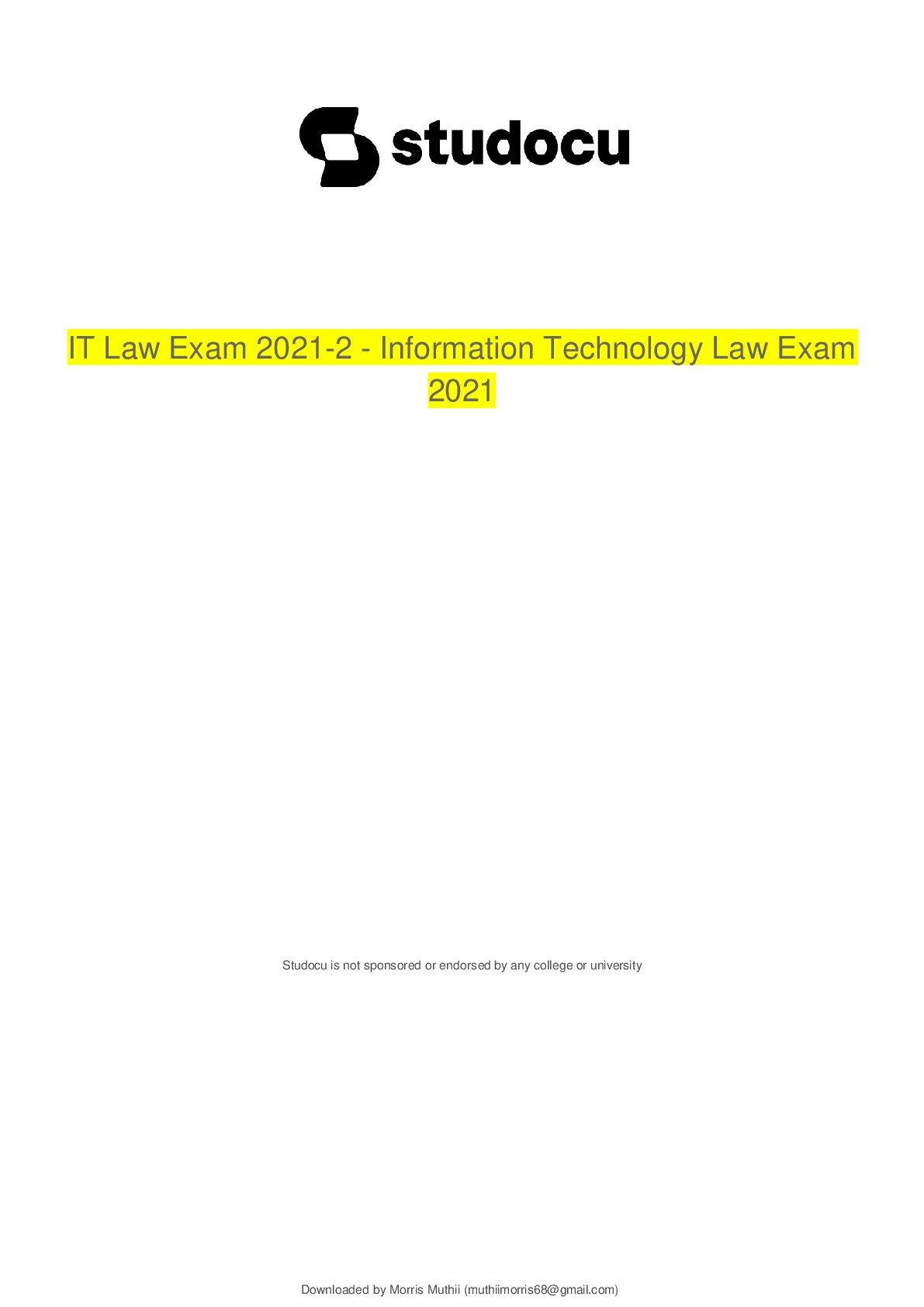
Information Technology Moc Test #2 ,Detailed,test Exam with Verified Q $ A.
Enabling smartphones and mobile devices to communicate with each other and with web servers in a common format, is the responsibility of the 0/1 TCP/IP WWW SMTP IP ISP providers like Di...
By NurseBailley 9 months ago
$10.5
3
Reviews( 0 )
$8.50
Can't find what you want? Try our AI powered Search
Document information
Connected school, study & course
About the document
Uploaded On
Mar 17, 2025
Number of pages
7
Written in
All
Additional information
This document has been written for:
Uploaded
Mar 17, 2025
Downloads
0
Views
57

